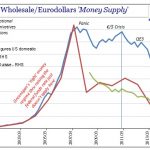It is going to be a crucial week for 3 currencies: the USD, the GBP and the AUD. All have Central Banks making their monthly reports and decisions. All are likely to be important to the market as a whole because the USD is always central, and there has been a lot of focus lately on the NZD and AUD in particular. As it also the start of a new calendar month, higher volatility is likely to occur over this coming week.
U.S. Dollar
It will be an important and busy week ahead for the Greenback. The highlight will come on Friday with the release of the Non-Farm Employment Change, Average Hourly Earnings and Unemployment Rate data. The week will begin on Monday with ISM Manufacturing PMI. Then on Wednesday there will be releases of the ADP Non-Farm Employment Change, Trade Balance, and ISM Non-Manufacturing PMI data. The Chair of the Federal Reserve will also be testifying before Congress. Thursday will see the release of Unemployment Claims data.
British Pound
It will be a very important and busy week ahead for the Pound with releases due every day. The highlight will be on Thursday, consisting of the Bank of England’s monthly Monetary Policy Statement and Official Bank Rate, plus their Votes and Inflation Report. The Governor of the Bank of England will also be speaking later that day.
Earlier in the week, Monday will see the release of Manufacturing PMI data, followed by Construction PMI on Tuesday. On Wednesday there will be a release of Services PMI. Finally, on Friday we will get a release of Manufacturing Production numbers.
Australian Dollar
It will be a very important and busy week ahead for the Aussie with releases due every day. The highlight will be on Tuesday, consisting of the RBA’s monthly Rate Statement and Cash Rate.
Earlier in the week, Monday will see the release of Building Approvals data, followed by Retail Sales and Trade Balance data on Wednesday. On Thursday the Governor of the RBA will be speaking at a conference. Finally, on Friday there will be a very important quarterly event: the release of the RBA’s Monetary Policy Statement.













Leave A Comment